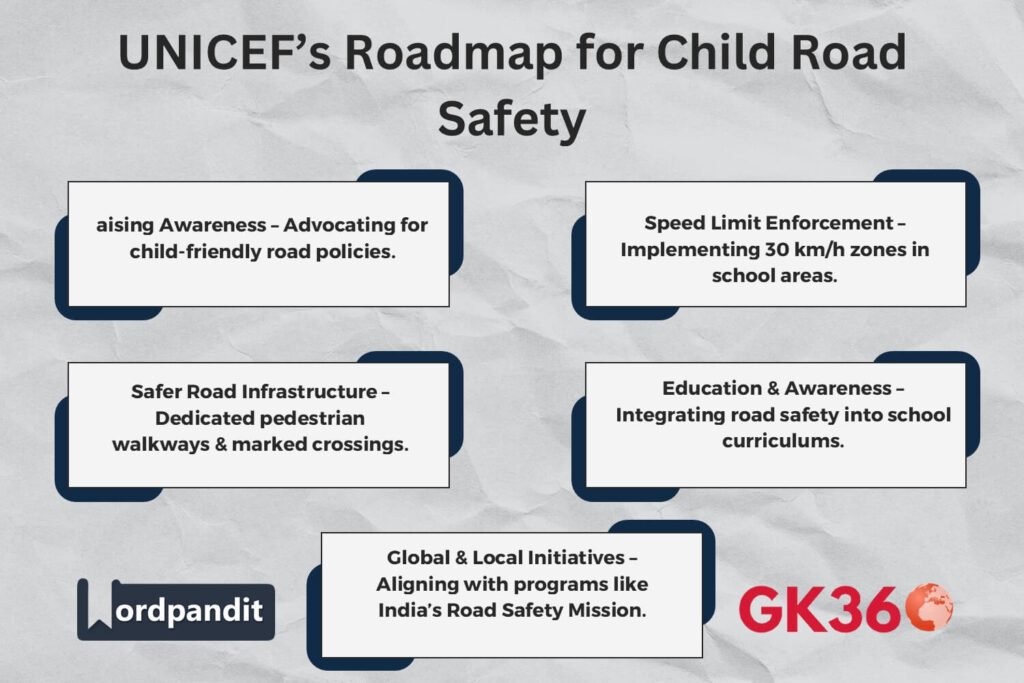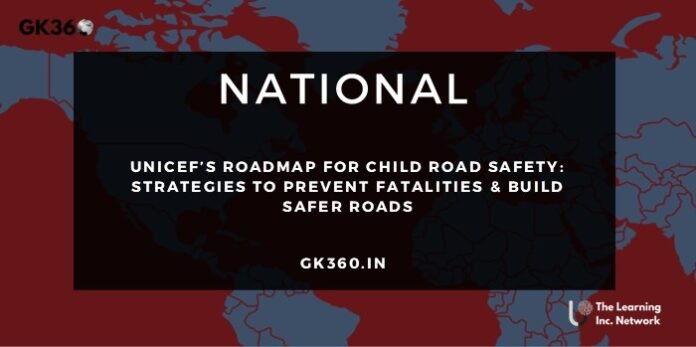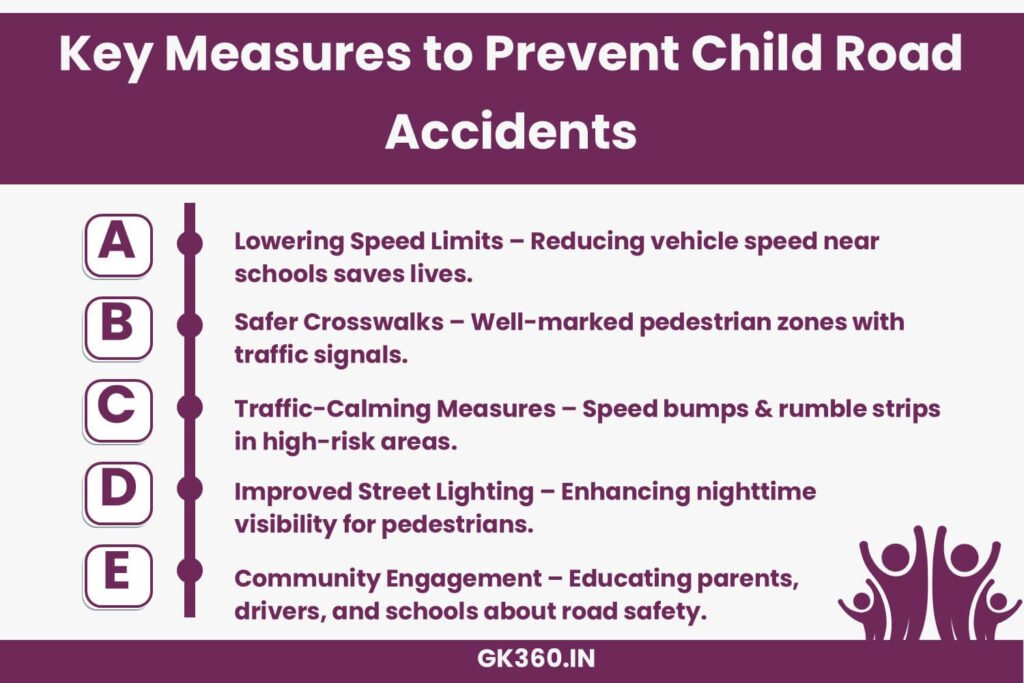UNICEF’s Roadmap for Child Road Safety: Strategies to Prevent Fatalities & Build Safer Roads
Introduction
Road safety for children is a growing global concern, with road traffic accidents ranking among the leading causes of injury-related deaths among young individuals. According to UNICEF, approximately 220,000 children and adolescents aged 0-19 die in road accidents each year—an average of over 600 preventable deaths per day. This alarming statistic highlights the urgent need for immediate action.
In response, UNICEF has launched a comprehensive national roadmap aimed at reducing child fatalities on the road through a combination of policy recommendations, infrastructure improvements, and educational programs. This initiative underscores the responsibility of governments, communities, and individuals to work collectively in ensuring safer roads for children worldwide.

Table of Contents
- Why Is Child Road Safety a Global Concern?
- Understanding UNICEF’s Child Road Safety Roadmap
- UNICEF’s Three Core Actions for Safer Roads
- India’s Initiatives in Child Road Safety
- The Collective Responsibility for Safer Roads
- FAQs on Child Road Safety
- Conclusion & Call to Action
Why Is Child Road Safety a Global Concern?
UNICEF reports that road traffic injuries account for the highest number of child fatalities worldwide. These accidents not only claim young lives but also have severe economic consequences. Studies show that financial losses from road accidents can range from 0.3% to 7.5% of a country’s GDP.
In regions like South Asia, the situation is particularly critical. In 2019 alone, 29,859 children and adolescents lost their lives in road accidents. The economic burden, combined with the emotional toll on families, underscores the urgency of implementing strict road safety measures.
Understanding UNICEF’s Child Road Safety Roadmap
UNICEF’s roadmap for child road safety is a three-pronged approach designed to tackle the root causes of road accidents involving children. The initiative focuses on:
- ✅ Raising awareness – Highlighting the risks and advocating for safer road behavior.
- ✅ Preventing accidents – Implementing evidence-based interventions to reduce risks.
- ✅ Ensuring effective implementation – Monitoring and enforcing road safety measures.
By combining education, enforcement, and engineering solutions, UNICEF aims to create a sustainable and child-friendly traffic environment.
UNICEF’s Three Core Actions for Safer Roads
A. Speed Limit Enforcement
🚦 The risk of child pedestrian fatalities increases significantly with vehicle speed. According to road safety studies:
- A child hit by a car at 30 km/h has a much higher chance of survival compared to one struck at 50 km/h.
- Reducing speed limits in school zones and residential areas can significantly lower the number of child fatalities.
UNICEF’s Recommendations:
- ✔️ Strict enforcement of 30 km/h speed limits in school zones.
- ✔️ Installation of speed bumps and traffic-calming measures in high-risk areas.
- ✔️ Use of automated speed enforcement systems to monitor traffic speed.
B. Safer Road Infrastructure
🚧 Many road accidents involving children occur due to poorly designed infrastructure. Children are particularly vulnerable in areas where pedestrian facilities are inadequate.
UNICEF’s Infrastructure Recommendations:
- ✔️ Dedicated pedestrian walkways separate from vehicle traffic.
- ✔️ Well-marked crosswalks with traffic signals near schools and parks.
- ✔️ Traffic-calming measures, such as raised crossings and rumble strips.
- ✔️ Improved street lighting to enhance visibility at night.
C. Education & Awareness
🎓 UNICEF stresses the importance of early education on road safety. Children, parents, and communities must be educated on responsible road behavior.
Key Initiatives Include:
- ✔️ Integrating road safety education into school curriculums.
- ✔️ Conducting community workshops for parents and caregivers.
- ✔️ Encouraging on-road safety training for children in controlled environments.
India’s Initiatives in Child Road Safety
Recognizing the severity of child road fatalities, India has launched the National Road Safety Mission for Kids and Youth. The initiative aligns with UNICEF’s roadmap and focuses on:
🚸 Specialized Road Safety Curriculum
- Schools are now incorporating road safety lessons into their curriculum.
🏆 National Road Safety Olympiad
- Educating over 2 million students annually on traffic rules and accident prevention.
🚦 Community-Driven Safety Programs
- Awareness campaigns and training for school bus drivers, parents, and local communities.
Currently, India faces 29 child fatalities every day due to road accidents. Through these efforts, the country aims to significantly reduce preventable deaths among young individuals.
The Collective Responsibility for Safer Roads
Ensuring safer roads for children requires collective action from governments, communities, and individuals.
👩⚖️ Governments
- Must enforce stricter traffic laws and invest in safer infrastructure.
🏫 Schools
- Should implement mandatory road safety training for students.
🚗 Drivers
- Need to adhere to speed limits and be more mindful of child pedestrians.
👨👩👧 Parents & Communities
- Must educate children about safe road behavior and advocate for better road safety policies.
By fostering a culture of road safety, societies can dramatically reduce child fatalities on the roads.
FAQs on Child Road Safety
1️⃣ What are the biggest risk factors for child road accidents?
The most common risk factors include:
- 🚗 High-speed traffic near schools and residential areas.
- 🚧 Lack of pedestrian-friendly infrastructure, such as sidewalks and crosswalks.
- 🌙 Poor road visibility and inadequate street lighting.
- 🚦 Inconsistent traffic law enforcement leading to unsafe driving behaviors.
2️⃣ How does UNICEF’s roadmap help reduce child fatalities?
The roadmap focuses on:
- ✅ Speed regulation in school zones.
- ✅ Infrastructure improvements for safer pedestrian pathways.
- ✅ Educational programs to teach road safety from an early age.
3️⃣ Why are speed limits crucial in school zones?
Lower speed limits significantly reduce the likelihood of fatal accidents and provide drivers with more reaction time to avoid collisions.
4️⃣ What role do parents and educators play in road safety?
Parents and teachers should:
- 👨👩👧 Teach children pedestrian safety rules.
- 📢 Advocate for better traffic regulations in school zones.
- 🚦 Participate in community road safety programs.
5️⃣ How can developing countries improve child road safety?
Governments can:
- ✅ Prioritize road safety funding for infrastructure improvements.
- ✅ Strengthen traffic law enforcement to ensure compliance.
- ✅ Invest in educational campaigns to raise awareness on road safety.
Conclusion & Call to Action
With 600 child fatalities per day, road safety is an urgent global issue that demands immediate attention. UNICEF’s roadmap for child road safety provides a structured approach to saving young lives through:
- ✔️ Speed control measures in school zones.
- ✔️ Infrastructure improvements to create safer roads.
- ✔️ Comprehensive safety education for children, parents, and communities.
By working together—governments, schools, drivers, and communities—we can significantly reduce preventable child fatalities and create a safer future for our children.
Key Takeaways
| Aspect | Details |
|---|---|
| Global Child Road Safety Concern | Road accidents are a leading cause of child fatalities, with 220,000 deaths annually. |
| UNICEF’s Roadmap | A three-pronged strategy focusing on awareness, prevention, and enforcement. |
| Speed Limit Enforcement | Mandatory 30 km/h limits in school zones to reduce accident severity. |
| Safer Road Infrastructure | Dedicated pedestrian walkways, raised crossings, and better street lighting. |
| Education & Awareness | Integrating road safety education into school curriculums and community training. |
| India’s Efforts | The National Road Safety Mission for Kids aims to reduce child fatalities through education and enforcement. |
| Collective Responsibility | Governments, communities, and individuals must collaborate to improve road safety. |
Related Terms:
- Child Road Safety
- UNICEF Road Safety Plan
- Preventing Child Road Accidents
- School Zone Speed Limits
- Safe Road Infrastructure for Kids
- Traffic Safety for Children
- Road Safety Awareness Programs
- India Road Safety Mission
- Pedestrian-Friendly Roads
- Community Engagement in Road Safety






